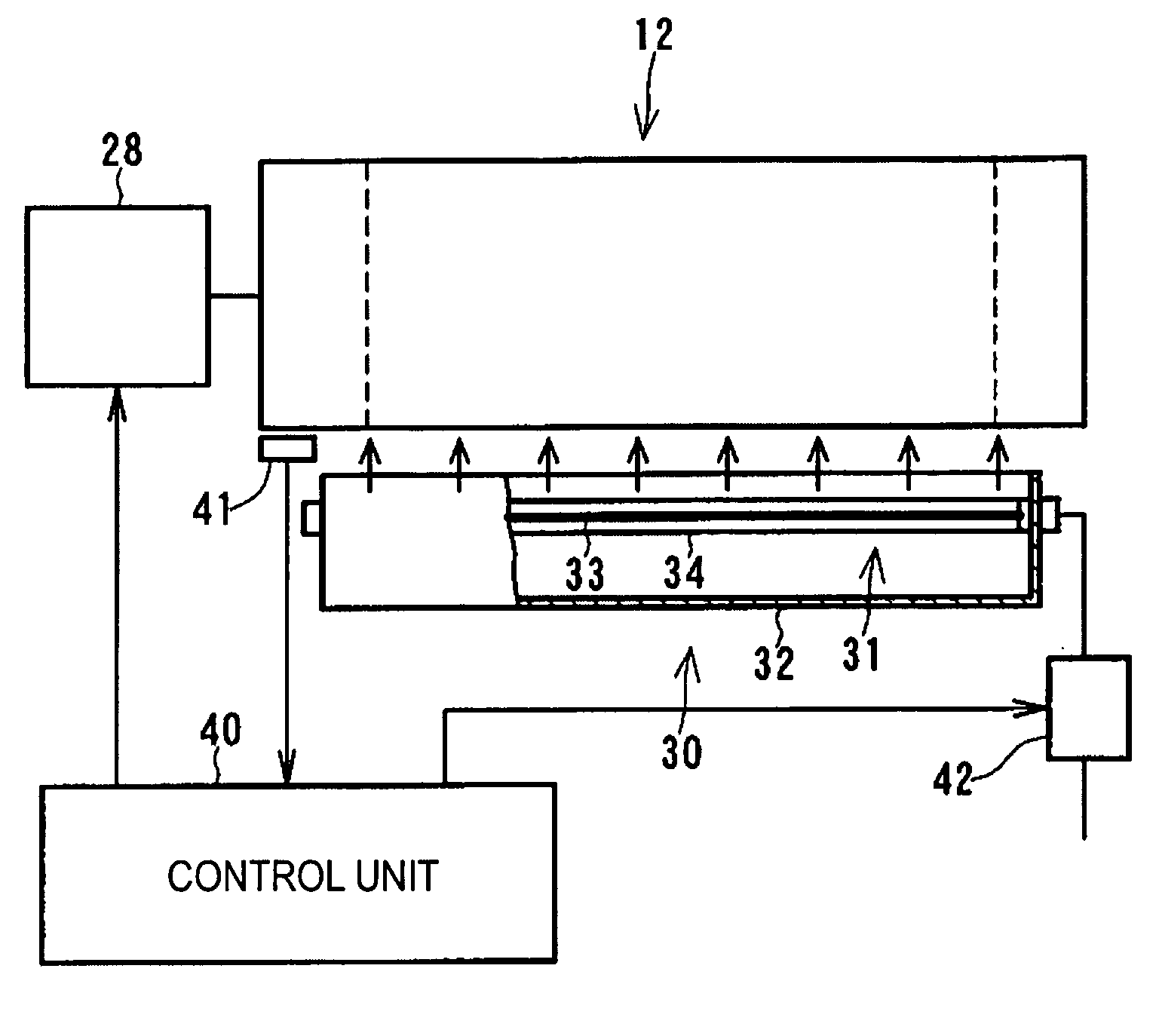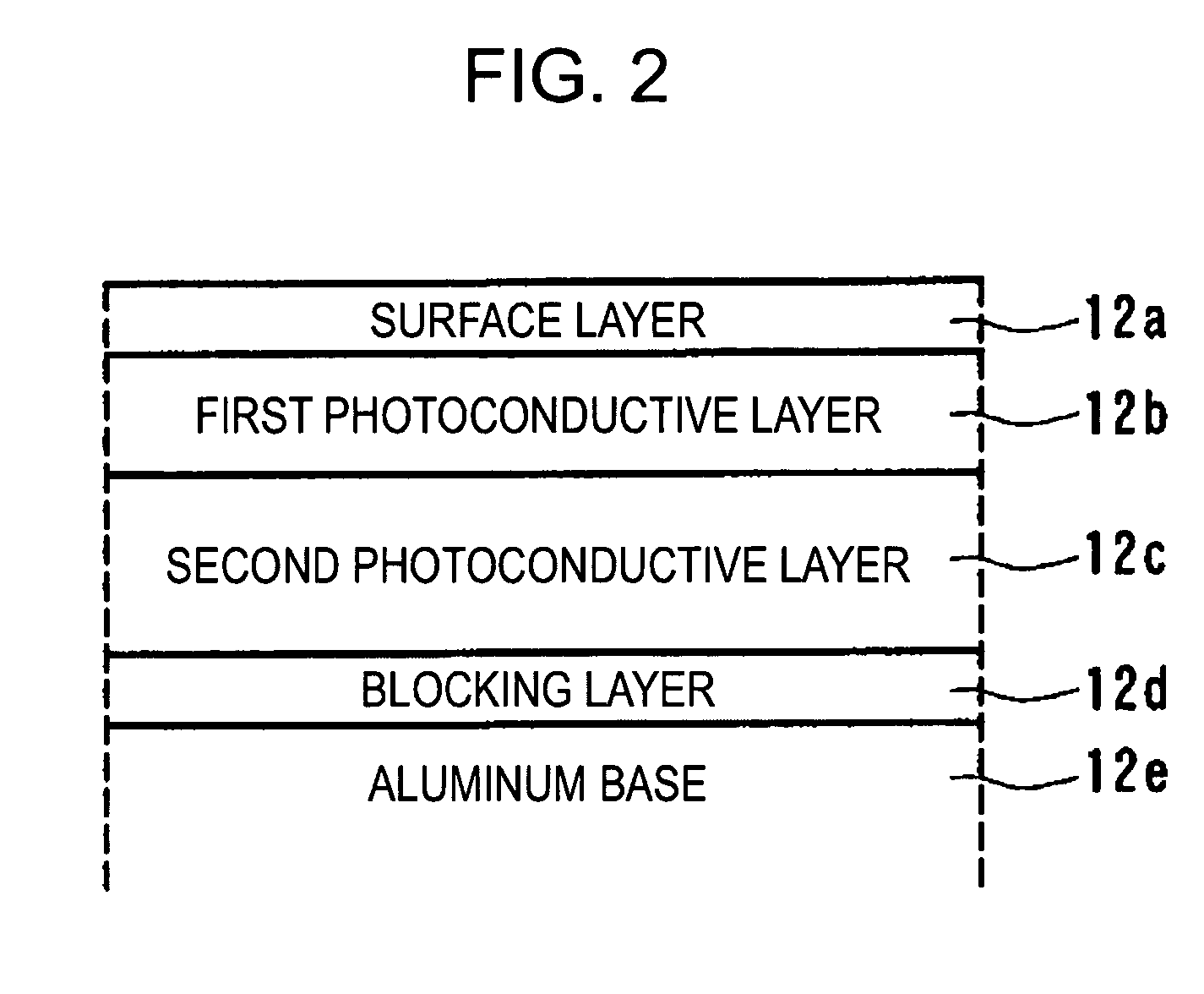Image forming apparatus with heat control of image bearing member
a technology of image bearing and heat control, which is applied in the field of image forming apparatus, can solve the problems of power consumption, uneven density or some defects in the output image, and the quality of the formed image is reduced, so as to reduce the heat applied, and reduce the effect of moistur
- Summary
- Abstract
- Description
- Claims
- Application Information
AI Technical Summary
Benefits of technology
Problems solved by technology
Method used
Image
Examples
first exemplary embodiment
[0035]FIG. 1 is a block diagram of an image forming apparatus according to a first exemplary embodiment of the present invention. FIG. 2 illustrates the surface structure of a photosensitive drum. FIG. 3 is a diagram illustrating the heating control process of the photosensitive drum. FIG. 4 is a diagram illustrating the radiation spectrum of a carbon lamp heater. FIG. 5 illustrates the distribution of the anisotropic radiation intensity of the carbon lamp heater. FIG. 6 is a flow chart of the heating control process.
[0036] According to this embodiment, as shown in FIG. 1, an image forming apparatus 10 (an electrophotographic monochrome laser beam printing apparatus) includes a photosensitive drum 12 (image bearing member) adjacent to a transport path of a sheet of material (transfer material) 24. The image forming apparatus 10 further includes a discharge exposure lamp 22, a primary charger 19, an exposure unit 11, an electric potential sensor 21, a developer unit 13, a pre-transf...
second exemplary embodiment
[0088]FIG. 7 illustrates the result of experiments by an image forming apparatus according to a second exemplary embodiment of the present invention.
[0089] To determine the effect of the carbon lamp heater 31 shown in FIG. 5, a series of experiments was conducted by the present inventor to determine whether image deletion occurs or not depending on various structures of a heating unit.
[0090] A copying machine (iR8500 available from CANON KABUSHIKI KAISHA) was modified, as shown in FIG. 1. After the surface temperature of the photosensitive drum 12 was adjusted to 40° C. using the carbon lamp heater 31 having the distribution of anisotropic radiation intensity, images were continuously formed on 5000 sheets of material. Subsequently, the main body and the carbon lamp heater 31 were powered off and were left unused overnight in a high-temperature and high-humidity environment with a temperature of 30° C. and a relative humidity of 80%. On the following day, the carbon lamp heater 31...
third exemplary embodiment
[0097]FIG. 8 illustrates the control of lamp heater heating means in an image forming apparatus according to a third exemplary embodiment of the present invention.
[0098] According to the third embodiment, the structure of an image forming apparatus is similar to that of the image forming apparatus of the first embodiment shown in FIGS. 1 through 5. In this embodiment, the speed control of the photosensitive drum 12 shown in FIG. 6 and the output control of a carbon lamp heater shown in FIG. 8 are added to this structure.
[0099] That is, the control unit 40 shown in FIG. 3 performs on and off control of switch 42 to apply a pulse current to the carbon lamp heater 31 and changes the width of the pulse so as to continuously adjust the output of the carbon lamp heater 31.
[0100] As shown in FIG. 8, at step 121, the control unit 40 determines whether the image forming apparatus 10 is performing a printing operation. If the image forming apparatus 10 is performing a printing operation, t...
PUM
 Login to View More
Login to View More Abstract
Description
Claims
Application Information
 Login to View More
Login to View More - R&D
- Intellectual Property
- Life Sciences
- Materials
- Tech Scout
- Unparalleled Data Quality
- Higher Quality Content
- 60% Fewer Hallucinations
Browse by: Latest US Patents, China's latest patents, Technical Efficacy Thesaurus, Application Domain, Technology Topic, Popular Technical Reports.
© 2025 PatSnap. All rights reserved.Legal|Privacy policy|Modern Slavery Act Transparency Statement|Sitemap|About US| Contact US: help@patsnap.com



